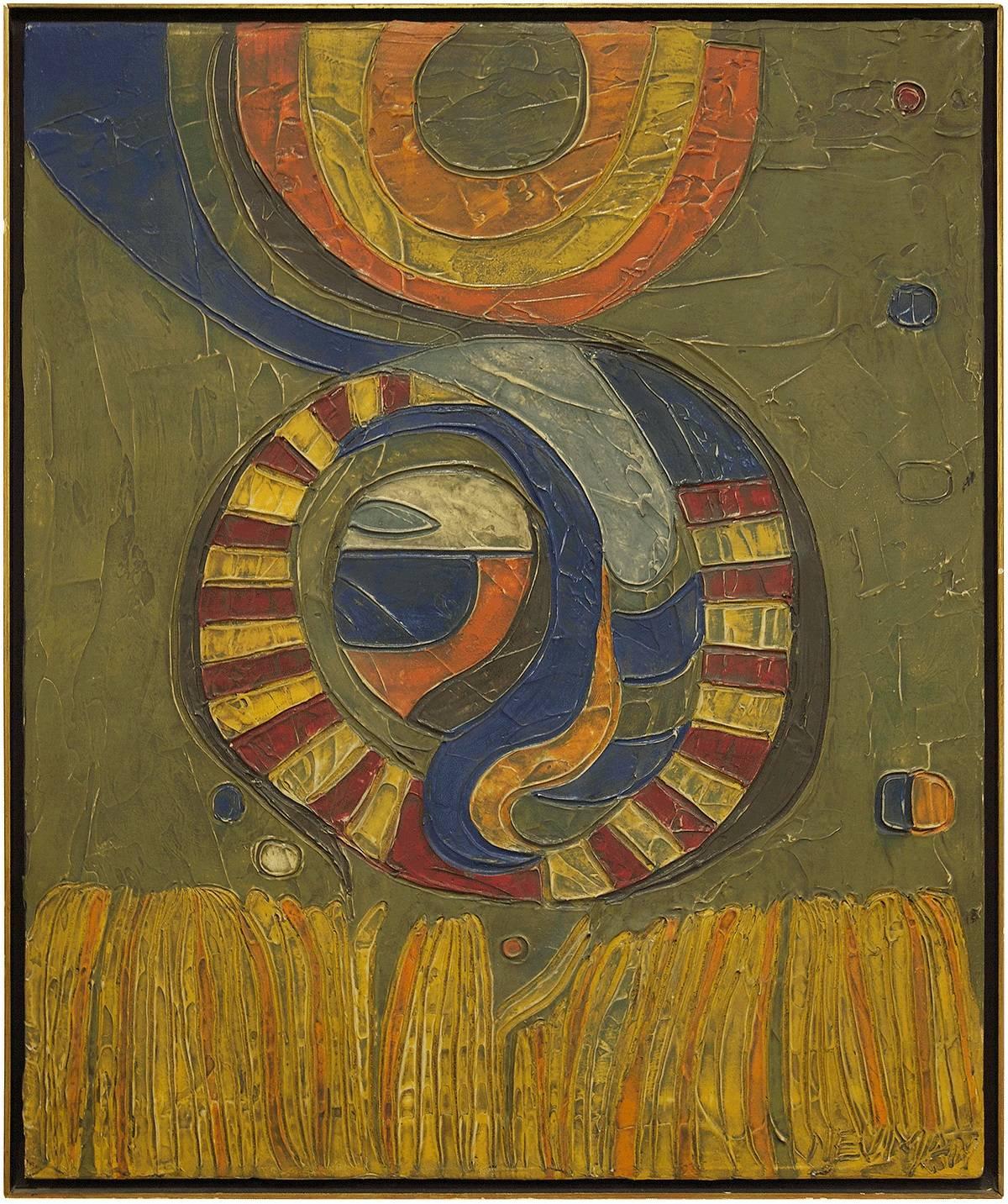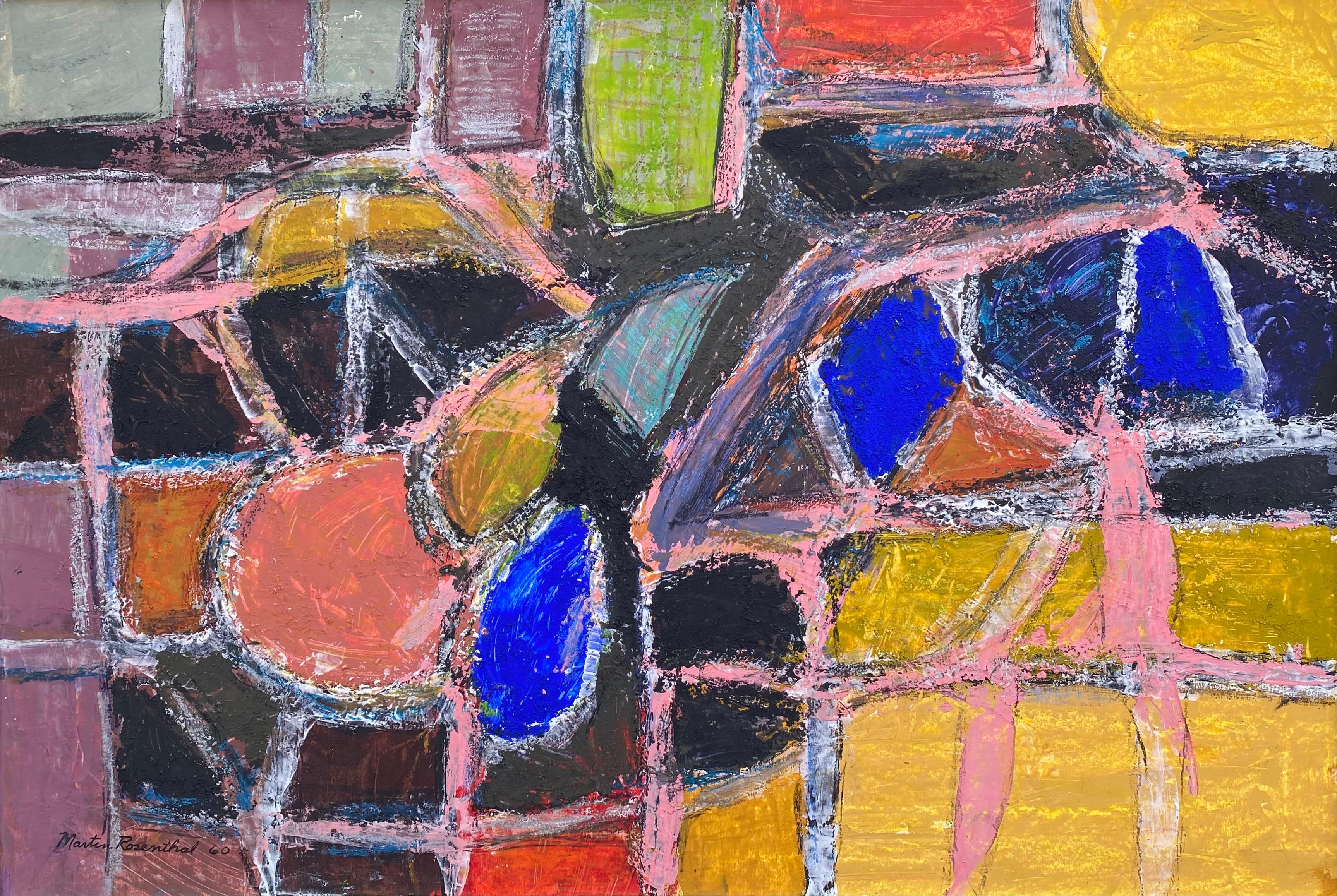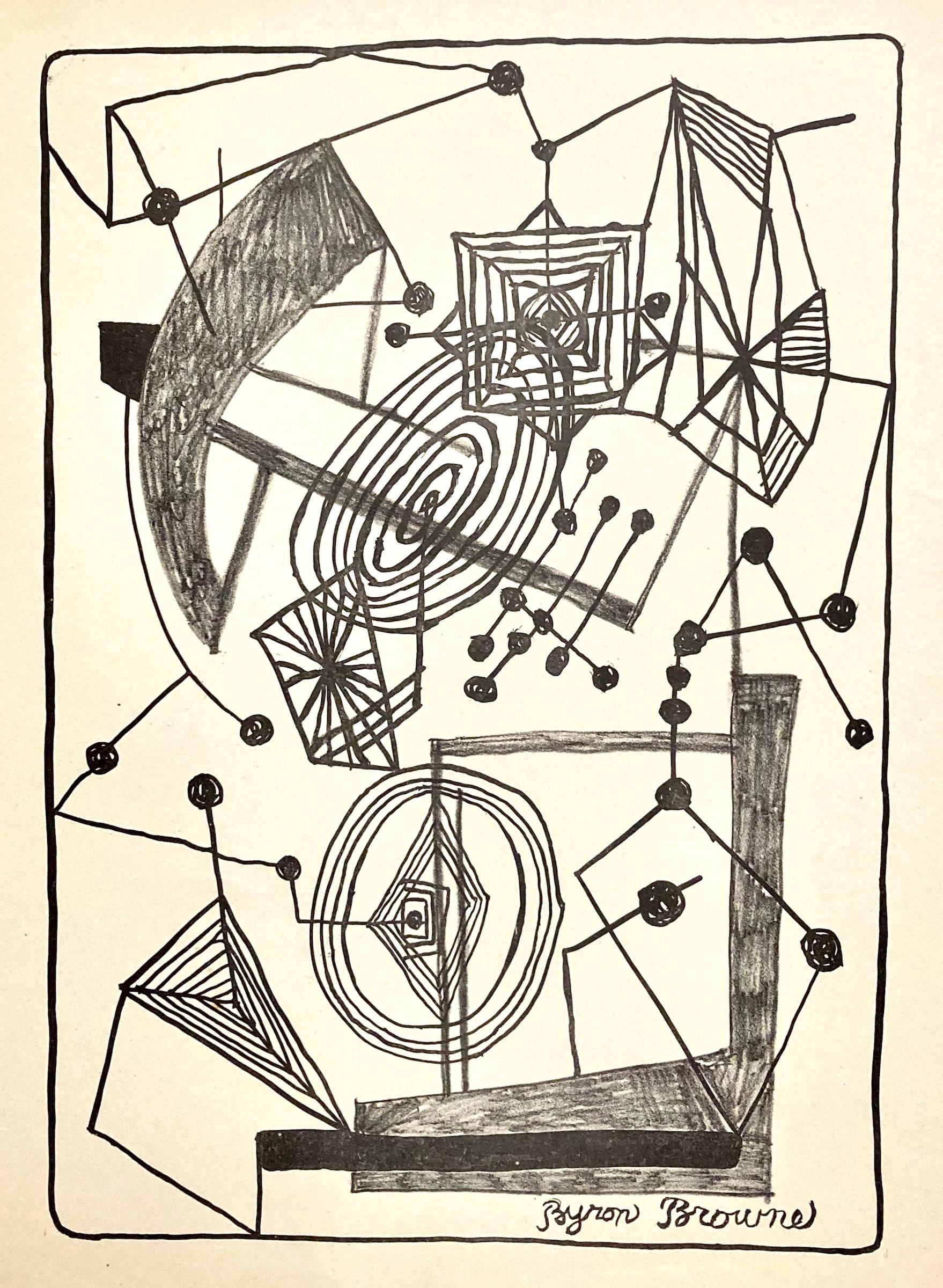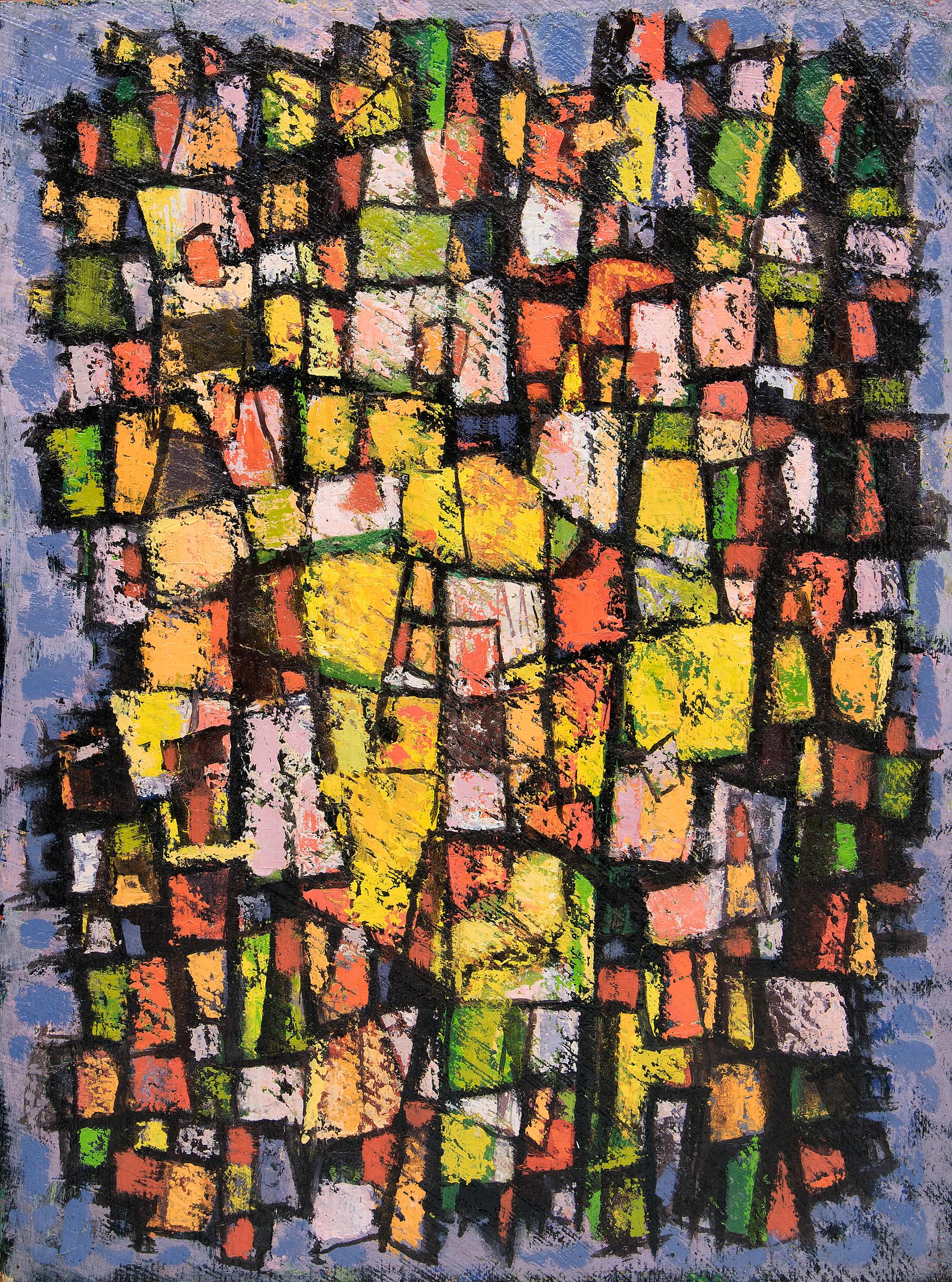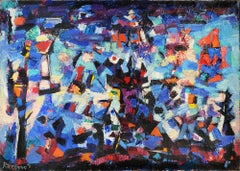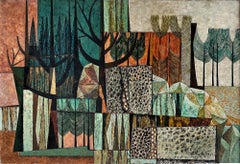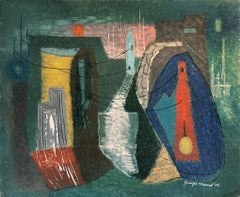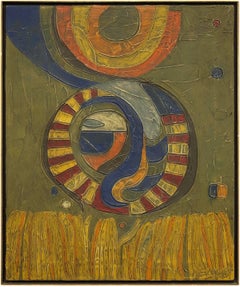Items Similar to Untitled
Want more images or videos?
Request additional images or videos from the seller
1 of 22
Richard Pousette-DartUntitled1950
1950
$1,150,000
£853,344.60
€994,029.53
CA$1,600,808.35
A$1,782,644.46
CHF 927,767.93
MX$21,979,791.30
NOK 11,815,834.28
SEK 11,105,738.78
DKK 7,416,693.67
Shipping
Retrieving quote...The 1stDibs Promise:
Authenticity Guarantee,
Money-Back Guarantee,
24-Hour Cancellation
About the Item
Acrylic on masonite. This is a pivotal work in deep and radiant cobalt blue from 1950. It dipicts calligraphic and hieroglyph structures over a grid and pyramidal base by the first generation abstract expressionist.
Provenance: Skinner: November 13, 1992 [Lot 00219}, The entry in the Skinner catalog indicates that the painting came directly from the artist to the family of the consignor to Skinner. Kaminsky Auctions. There is an unbroken paper trail that traces the ownership of the painting from the current owner, through two auction houses to the artist. Perfect unbroken provenance.
Pousette-Dart was among the most inventive of the Abstract Expressionist generation, His uncanny talent was to expand the nature of abstraction and still make each mark each element very much his own; a reflection of what he called "the concealed power of the spirit," he said, “not of the brute physical form." His was not aiming for a singular, realized aesthetic formula but to expand the possibilities of painting; the transcendental in painting. Typical of such invention and exploration is this painting Untitled 1950 when the artist was only 34 years old and represented by one of the champions of the new American painting, Betty Parsons.
A banner year for Pousette-Dart, the Museum of Modern Art acquired their first painting by the Minnesota born artist. He worked on easel size works such as this painting an oil on masonite. At the same time Pousette-Dart was also working on larger scale works such as Path of the Hero, running over ten feet in length now in the collection of the Metropolitan Museum of Art. Both contain fields of color articulated by a highly sophisticated white hieroglyphic vocabulary. Rather than demonstrate an expressionist sensibility, Pousette-Dart harnesses his more cerebral ideas transforming thick areas of paint into a more refined composition of geometric forms akin to the pattern and forms of say a stained glass window. In a way he is looking back at Fugue, 1940 a black and white composition which makes use of a similar format of painting albeit smaller. Color and form are minimal, but what Pousette-Dart has maximized is the rhythmic and syncopated character of painting casting his ideas into purely symbolic terms that one might link to the pictograms of Adolph Gottlieb. Nonetheless, nature is always at the core of Pousette-Dart’s thinking and dreaming. Here he has transformed the local Ramapo Mountains—where he will eventually move with his family to live and work— into a complex series of articulated fragments linked by style, scale and color. The painting’s imagery built on two large triangles and reduced to just two colors, cobalt blue and white all outlined in black. Pousette-Dart symbols stacked in horizontal and vertical rows: blue is ground, white is language, symbolic of light, consciousness and awareness . The painting maintains a mystical character images compounded that formulate a secret code and linked to the series of white paintings Pousette-Dart authored in the first half of the 1950s. Get up close to the picture and you discover images within images a kind of picture puzzle with parts fitting into parts, this landscape is one that is both imagined and remembered. It’s as if this secret code is a challenge for him to build a mythical place that is first created in his mind and then laid out like a map on the masonite support in surprising detail. We see the individual parts dance across the surface in an elegant symmetry. The clarity and directness of this work stands in sharp contrast to the other imagined landscapes he painted during this same period, paintings suffused with atmosphere and texture. Though white again is the protagonist it is a warm and weathered white. They have something of an ethereal glow and it is here too that Pousette-Dart like Mark Rothko and Barnett Newman seeks and finds a spiritual connection through the means of abstract painting. The series of white paintings like Path of the White Bird, 1950-51 or White Garden Sky, 1951 while of their day they also seem a nod to the past, that is to painters of the past like Titian or Veronese. Untitled,1950, however, takes us in an entirely new direction. It very fresh, of the moment, spontaneous, a revelation as if Pousette-Dart has had a vision of what is to come. One can’t help but read this rather intimate composition as a kind of musical score made up of notes and notations, a magical transformation in paint combining themes and variations that are repeated throughout the canvas. He has now orchestrated a perfect harmony using elegant blocks filled with twists, curves, circles, squares, rectangles and arabesques that refer to trees, flowers, streams, all of nature as if seen through a prism . The world represented here is ultimately for the artist and for the viewer pure abstraction. In Untitled 1950 Pousette-Dart has developed a geometry like no other, because it draws from nature yet eschews the colors of nature in favor of a mid century modern palette. In the years to come Pousette-Dart will draw from Untitled 1950 and expand on each of these small abstract elements, these notations as I called them, draw them on a larger scale or combine them into larger groupings; pushing their symbolic character in each and every painting. As Pousette-Dart moved on his paintings over the next few decades would become more meditative and iconic drawing inspiration from what he discovered in this 1950 composition.
Several years after his death now over two decades ago the Metropolitan Museum mounted a survey of his career. The breadth, depth and scope of Pousette-Dart’s work took many by surprise. In this exhibition they saw a painter who had expanded the definition not only of Abstract Expressionism but painting itself. It was his ability to explore and articulate all aspects of this visual art and find ways in which he could continue to employ and expand these unique symbols and signs as created in this remarkable untitled painting. This 1950 work is a prelude of works such as The Square of Light, 1979-80 or Cathedral 1979-80 in the Indianapolis Museum of Art’s permanent collection are two prime examples
Untitled 1950 is the key that unlocks the door to his future while defining who he was then, a brilliant member of the New York School.
( Michael Klein knew Pousette-Dart personally as well as his daughter Joanna and visited his studio in Rockland country, several times between 1985 and 1988 )
Michael Klein
Sharon Springs New York
2019
Michael Klein
Michael Klein Arts LLC
An agent for Artists and Artists Estates
- Creator:Richard Pousette-Dart (1916 - 1992, American)
- Creation Year:1950
- Dimensions:Height: 42 in (106.68 cm)Width: 48 in (121.92 cm)
- Medium:
- Movement & Style:
- Period:
- Condition:Work has been professioinally cleaned and restored presents very well. Nails coming true paint. Otherwise presents very well with deep staturated colors.
- Gallery Location:Miami, FL
- Reference Number:1stDibs: LU38534761972
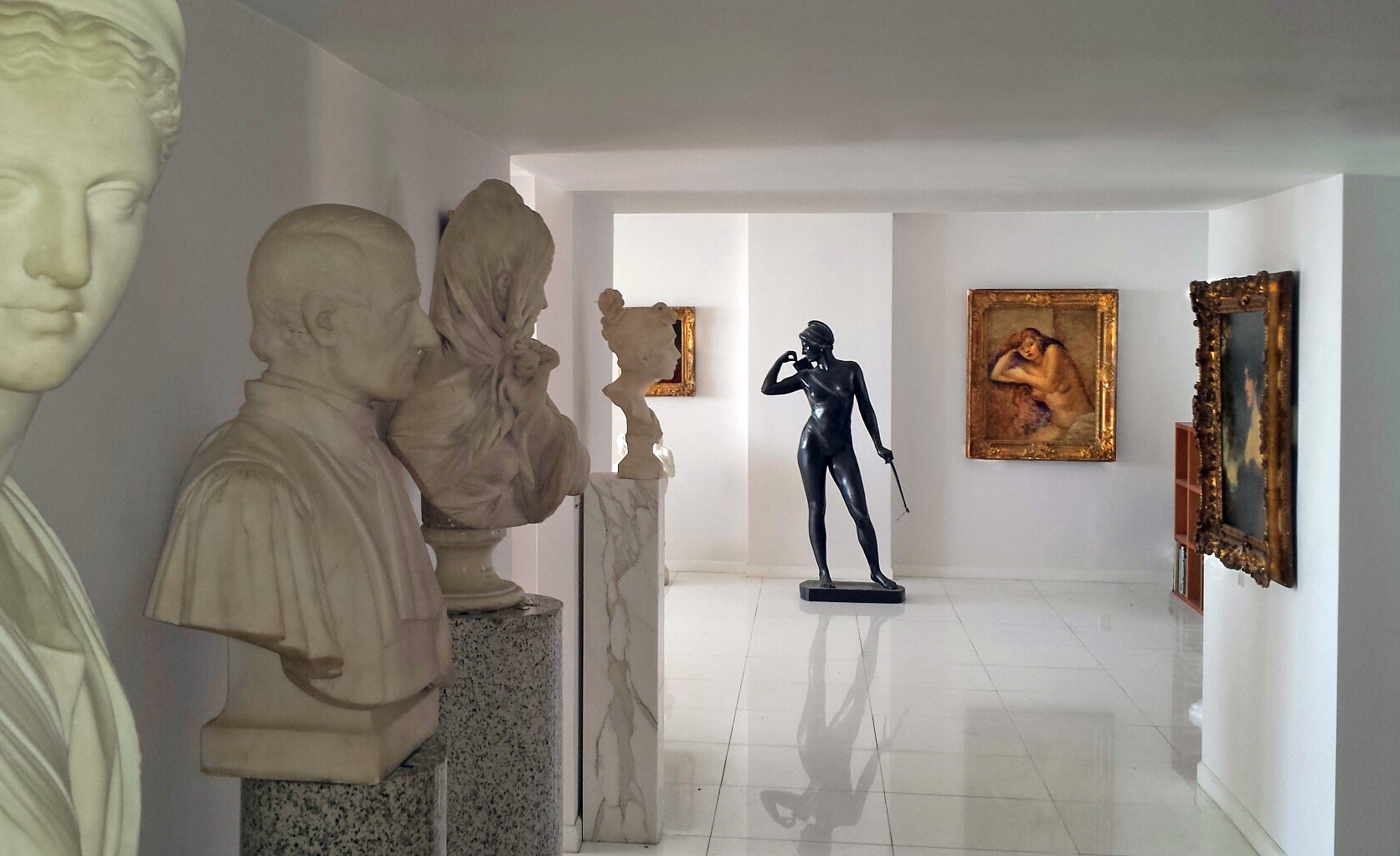
About the Seller
4.9
Gold Seller
Premium sellers maintaining a 4.3+ rating and 24-hour response times
Established in 2005
1stDibs seller since 2016
115 sales on 1stDibs
Typical response time: 1 hour
- ShippingRetrieving quote...Shipping from: Miami, FL
- Return Policy
Authenticity Guarantee
In the unlikely event there’s an issue with an item’s authenticity, contact us within 1 year for a full refund. DetailsMoney-Back Guarantee
If your item is not as described, is damaged in transit, or does not arrive, contact us within 7 days for a full refund. Details24-Hour Cancellation
You have a 24-hour grace period in which to reconsider your purchase, with no questions asked.Vetted Professional Sellers
Our world-class sellers must adhere to strict standards for service and quality, maintaining the integrity of our listings.Price-Match Guarantee
If you find that a seller listed the same item for a lower price elsewhere, we’ll match it.Trusted Global Delivery
Our best-in-class carrier network provides specialized shipping options worldwide, including custom delivery.More From This Seller
View AllStorm Composition #3
By Abraham Rattner
Located in Miami, FL
An early example of Abstract Expressionism executed in 1955 during the movement's heyday and it's period of peak inventiveness. However, this work is still rooted in representation. The dark area the runs along the base of the picture is the ground and to the left, right and center there are black structures that represent trees. The work is very tactile and is composed of globs of paint that grow out from the surface and form a thick impasto. Rich vibrant saturated blues, reds and oranges create optical drama. The work look better in person. frame: 29 x 39 1/2 inches , Provenance: Kennedy Galleries
The Currier Gallery of Art...
Category
1950s Abstract Expressionist Abstract Paintings
Materials
Oil
Landscape Abstraction - Mid-Century - Twenty Paintings in One
Located in Miami, FL
When it comes to abstract painting, the creation date is important. At the height of Abstraction Expressionism, overlooked Academic Artist John Atherton created a wonderfully complex painting that embodies many of the characteristics of what was going on in Mid-Century American Art. The work is simultaneously abstract as it is representational. Like a Bento Box, it's divided into sections by dividers. On close inspection, each section stands on it's own as a beautiful mini-painting yet coalesces as part of the whole. From a distance, it is eye-pleasing, but as the view gets closer and closer, new structures and details gloriously reveal themselves. This is an important painting and not unlike the work of Joaquín Torres-García. It was done in the last year of the artist's life. Signed lower right. Canvas is relined. Framed size: 30 x 41.25. The work is best viewed with top gallery lights to bring out color.
Color will look different under different lighting conditions. Atherton exhibited at the famous Julien Levy Gallery in New York and his fine art is mainly associated with Magic Realism. He participated in the seminal 1943 Museum of Modern Art exhibition, American Realists and Magic Realists. The Museum of Modern Art has 4 Atherton paintings in its collection. As an Illustrator, Atherton did covers for the Saturday Evening Post, Fortune and Holiday Magazine...
Category
1950s Abstract Expressionist Abstract Paintings
Materials
Canvas, Oil
Early Abstract Expressionist - Black Mountain College Teacher, Franz Kline
By Emerson Woelffer
Located in Miami, FL
With Abstract Expressionist painting, one could argue that the earlier, the more historically important. This stunning non-objective action painting is characterized by vast swaths o...
Category
1950s Abstract Expressionist Abstract Paintings
Materials
Oil, Fiberboard
City Scape Abstract Expressionist Composition -Jackson Pollack Friend
By Joseph Meert
Located in Miami, FL
The fame, notoriety, and monetary value of an artist's work in today's market are not based on one's talent and vision. Factors such as marketing and media momentum play a defining r...
Category
1940s Abstract Expressionist Abstract Paintings
Materials
Gouache, Board
The Night Journey - Drip Painting like Jackson Pollock
By Byron Browne
Located in Miami, FL
In Byron Browne's "The Night Journey", 1947, Picasso meets Jackson Pollock. Brown strikes a balance between fanciful representation and gestural abstrac...
Category
1940s Abstract Expressionist Figurative Paintings
Materials
Canvas, Oil
$52,000 Sale Price
20% Off
Squares - Color Field Painting - like Mondrian
By Robert Goodnough, 1917-2010
Located in Miami, FL
Squares is a bridge between Mondrian and the Hard-edge abstraction movement. Clearly, this is a very early work because the artist has not yet found his mature style. The flat squares of uneven proportion, are in a formal but off-axis vertical /horizontal grid structure. Perhaps it's the artists take on a "drunk Mondrian" where the squares stumble to align themselves. Each square shape is different in shape and color and with visible brushstrokes and light impasto. Look carefully at the gray squares. They all have a slightly different hue. The squares are all unique individuals and not a repetition To Goodnough this was his departure from his influencer.
Squares show the influence of his teachers including Hans Hofman...
Category
1950s Abstract Expressionist Abstract Paintings
Materials
Oil
You May Also Like
Abstract Composition GS6, 1960-65 - oil paint, 73x54 cm
By Gérard Souzay
Located in Nice, FR
Oil on canvas, signed lower left.
Gérard Souzay (né Gérard Marcel Tisserand le 8 décembre 1918 à Angers, Maine-et-Loire, et mort le 17 août 2004 à Antib...
Category
Mid-20th Century Abstract Abstract Paintings
Materials
Oil
Abstract Composition SXX, 1960 - oil paint, 92x73 cm
By Gérard Souzay
Located in Nice, FR
Oil on canvas, signed lower right.
Gérard Souzay (né Gérard Marcel Tisserand le 8 décembre 1918 à Angers, Maine-et-Loire, et mort le 17 août 2004 à Antib...
Category
1960s Abstract Abstract Paintings
Materials
Oil
Geometric Composition, Abstract Oil Painting
By Robert Neuman
Located in Surfside, FL
Robert S. Neuman was born in Kellogg, Idaho, in 1926. After an honorable discharge from the Air Force in 1946, he received his BA in 1949 and his MFA in 1951, both from the California College of Arts and Crafts in Oakland. He moved from the Bay Area to the East Coast in 1957 where he began teaching art at SUNY New Paltz, then at Massachusetts College of Art, Brown University, and Harvard University’s Carpenter Center for Visual Arts. He received a Fulbright Fellowship for Painting in 1953 and the John S. Guggenheim Foundation Fellowship in 1956. He has been the subject of countless exhibitions, including five solo shows in 2013. Neuman’s work has been on view at the San Francisco Museum of Modern Art, the Whitney Museum of American Art, the Pennsylvania Academy of Fine Art, and the Museum of Modern Art, New York. His work is included in public collections including the Carnegie Museum of Art, Yale University Art Gallery, the Museum of Fine Arts Boston, and the Fogg Art Museum of Harvard University. He died in June 2015.
During the 1950's, Neuman painted in an Abstract Expressionist style, incorporating the stylistic signifiers of the Bay Area School such as broad surface treatments, a full color palette, and atmospheric light. In the 1960's, Neuman's art evolved into geometric abstraction, fusing form and content that often verged on symbolism. He produced various bodies of works such as the Kandinsky-esque cosmos paintings...
Category
Mid-20th Century Abstract Expressionist Abstract Paintings
Materials
Canvas, Oil
“Untitled Abstract”
By Martin Rosenthal
Located in Southampton, NY
Original abstract oil painting on heavy card stock by the American artist Martin Rosenthal. Signed lower left and dated 1960. Condition is very good. Slight bow to board. Nicely pro...
Category
1960s Abstract Expressionist Abstract Paintings
Materials
Oil, Board
$2,080 Sale Price
20% Off
Byron Browne, (Abstraction)
By Byron Browne
Located in New York, NY
This print was made for the American Abstract Artists Portfolio, 1937. All the images were lithographs made on zinc plates. Usually they were signed in the image -- on the plate, as ...
Category
1930s Abstract Abstract Prints
Materials
Lithograph
1950s Original Geometric Abstract Oil Painting, Vertical & Horizontal Art
By Paul Kauvar Smith
Located in Denver, CO
This vibrant abstract oil painting by Paul Kauvar Smith (1893-1977) features a striking composition in blue, pink, yellow, green, and black. The work is oil on board and has been fra...
Category
1950s Abstract Geometric Abstract Paintings
Materials
Oil, Board
More Ways To Browse
Art Glass Prism
Stained Glass Windows And Doors
Michael Stack
Vintage Canvas Banner
Marianne Faithfull
Mario Testino Print
Maurice Utrillo Lithograph
Michael Easton
Monochrome Diamond
Nicholas Robert Print
Pierre Cardin Paris New York
Railway Poster Scotland
Ralph Steadman
Rick Wolfryd
Ron Childers
Sarajevo Olympic
Shannon Wood Paintings
Skull Sculptures
